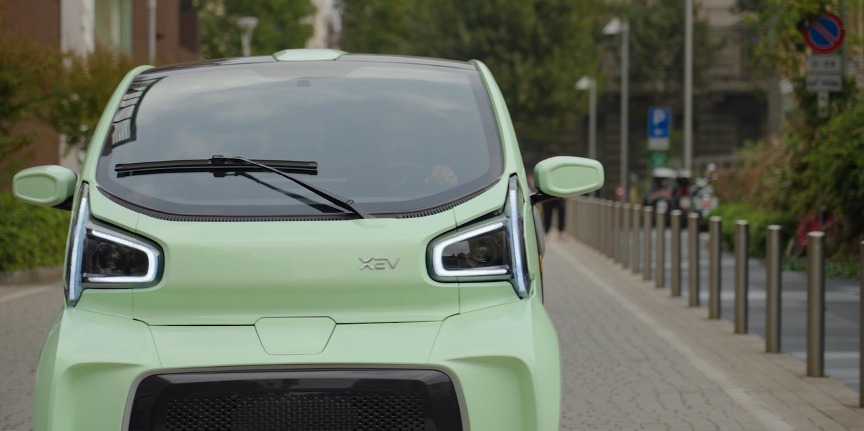XEV, an innovative Italian startup, has developed a lightweight electric two-seater that is revolutionizing city driving. With a maximum speed of 50 km/h (31 mph), it is the perfect vehicle for navigating busy urban streets. While not designed for sporty acceleration, it can reach 60 km/h (37 mph) if needed. For those looking to venture beyond city limits, the “Sporty” mode allows for speeds up to 80 km/h (50 mph), although it should be noted that it still falls short in comparison to more powerful vehicles.
Highways, even those with a speed limit of 55 mph (90 km/h), are not suitable for this compact car. Its power simply does not match the demands of highway driving. However, when it comes to city driving in European cities or leisurely cruising through American suburbs, the XEV is the perfect choice.
A Minimalistic and Functional Design
Although the XEV may be minimalist in design, it offers all the necessary features for a comfortable ride. The vehicle includes heating and cooling systems, as well as a Bluetooth connection that allows for music streaming and smartphone control through the accompanying app. The smartphone can also be mirrored on the 10.25″ touchscreen display, enhancing convenience for the driver.
In terms of safety, the XEV is equipped with essential features such as pedestrian warning, brake force control, hill-start assist, and a light single-pedal driving mode.
An Impressive Test Drive Experience
XEV showcased its impressive vehicle at the IAA Mobility Summit in Munich, Bayern (DE), offering attendees a 15-minute test drive. This short trial provided a glimpse into the vehicle’s usability and functionality. The XEV model fills the gap that many small 2-seat city cars struggle with. It avoids being underpowered to the point of not requiring a driver’s license, yet is not over-spec’d in an attempt to match the performance of larger cars. It strikes the perfect balance for city driving, offering both usability and affordability.
The Power of Personalization
While the XEV may be relatively expensive considering its functionality, its main selling point lies in its unique styling and personal expression opportunities. The vehicle features 3D-printed side panels that can be customized to meet individual preferences or branding requirements.
Combining Italian flair with exceptional engineering and production quality, the XEV delivers a remarkable driving experience. Although a higher power-to-mass ratio could have been beneficial, it manages to strike a comfortable balance. Unlike the Renault Twizzy, which leans more towards a 4-wheel bike experience and can deter potential buyers, the XEV offers a more traditional car-like experience.
Battery Swap Innovation
One standout feature of the XEV is its battery swap system. The battery is divided into three modules that can be independently replaced. This unique design is complemented by plans to establish swapping stations, allowing for quick and easy battery exchanges. With the ability to swap batteries, the XEV becomes even more appealing, particularly for those who require a convenient solution due to physical limitations.
Swapping stations resemble vending machines situated in front of shops and are typically operated by attendants. Battery swaps take approximately three minutes, providing a speedy alternative to traditional charging methods.
Fueling a City-by-City Rollout
Instead of focusing on entire countries, XEV takes a city-centric approach to facilitate the rollout of its microcar. By addressing the chicken and egg problem of demand versus charging station availability on a localized level, the XEV ensures its usability even without an extensive network of charging points.
Given the growing trend of reducing speed limits to 30 km/h (20 mph) in cities worldwide, vehicles like the XEV are set to become increasingly popular. It would be fascinating to test the XEV in bustling inner cities such as Amsterdam, Brussels, or Paris, where it would undoubtedly thrive.
